GA101 - Another World
From thecrankyhermit
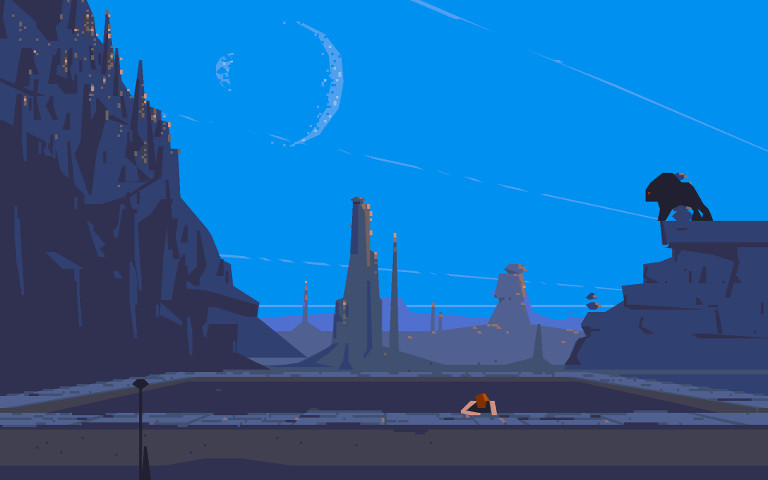
Éric Chahi, a French programmer and designer, began his video game career in 1983 programming games for 8-bit European microcomputers. In 1989, impressed by the graphical capabilities of the 16-bit Commodore Amiga, he joined Delphine Software as an artist. When their early title Future Wars was a success, he had the opportunity to create his own game. After two years of grueling development, in which he personally created everything except the sound and music, Another World was complete. Reviewers were awe-struck by its unique look and feel, and publications heaped accolades upon it. It was ported to other 16-bit computers, including IBM PCs, retitled "Out of This World" for the North American release, and sold one million copies worldwide.
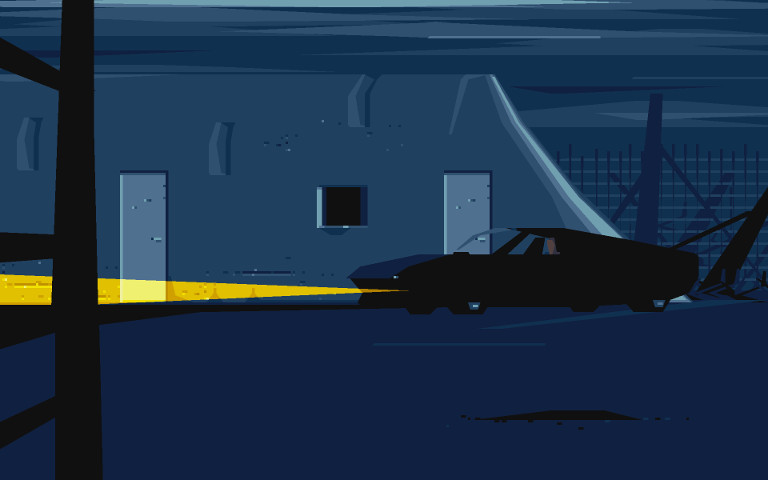
A nearly three minute cinematic prologue conveys not only the opening to the plot, but the visual style, the atmosphere, and the pacing of the game to follow, and does so with fluidly animated polygonal graphics and dynamic, varied compositions, unprecedented at the time. Late at night, a Ferrari pulls into a fenced-in bunker complex, seemingly isolated and vacant. A young man rises from the driver's seat, and vanishes into the bunker's elevator. Deep underground, he passes multiple unmanned security checkpoints, and finally, a computer confirms his identity - Professor Lester Knight Chaykin. Admitted entry to the collider laboratory, Lester opens a computer terminal and initializes an experiment. As the particles accelerate, an electrical storm gathers above ground, and lightning strikes the bunker. In a flash of white, Lester is zapped out of this world's existence, and into that of another world.
The perspective then shifts to a familiar perpendicular view, signifying that the game has started and the player is in control. Lester, still sitting down, materializes 20 feet under water. As his workstation sinks to the murky depths below, an outline of strange tendrils is seen emerging from them. Lester must quickly swim to the surface of the pool and climb out to a vast and strange wasteland-like world. Rocky mesas span endlessly into the horizon. A shadowy beast watches from a mesa, and runs off as Lester walks away from the pool. A natural bridge, suspended far above ground, tremors as you walk across it. The formations above and around you crumble, and debris falls from all directions. Slugs drop from the above and crawl along the floor - slugs with venomous stingers which kill instantly. This is a barren, inhospitable world, which existed long before your arrival, and reacts to your presence not with aggression, but with apathetic hostility.
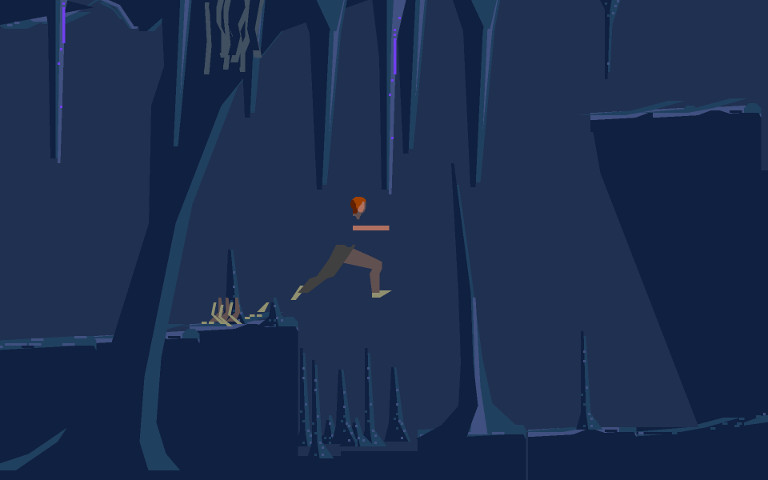
[describe the gameplay]
Another World follows the "cinematic platformer" formula established by Prince of Persia, and takes it in a new direction. The game is a continuous journey through the treacherous wasteland, without being separated into "levels" as typical action games were. Every landscape is hand-drawn in Éric's distinct polygonal art style - there are no pre-made graphical elements or repeating backgrounds. Nearly every obstacle is unique, and will require wits and intuition to surpass. When a red-eyed, razor-fanged monster waylays your path and snarls at you, conventional game logic would dictate this is the end-of-level boss, which will take several hits to defeat before you can progress. It will kill you. You must run - run for your life, and pause only when the environment ahead presents an opportunity to use it to your advantage. Eventually you receive a laser gun, but straight gun fights are rare - much of the game remains in uninhabited wastelands where the environment is the biggest danger, much of the time spent in inhabited areas is spent sneaking around, and many of the gun fights which do occur are scripted as elaborate action scenes rather than repetitious shooting mechanics.
Nearly every hazard can be thought of as a puzzle, as many require unique solutions. Some involve carefully exploring the world, observing the environment, and deducing the solution. Some involve pixel-perfect platforming or shooting skills. Some involve pure reflexes and/or intuition. Some involve dying repeatedly until you can execute a series of actions by pure muscle memory. Sometimes enemies must be fought, other times they must be manipulated to interact with the environment for you. And other times the solution is simply blasting whatever obstacle is in sight.
Even compared to other games in its genre, Another World is merciless. The slightest misaction or error in execution will kill you. Death is frequent, and in many cases unavoidable. At any given point in the game, you are likely to be killed by something unexpected, and upon restarting from a checkpoint, killed by it again, repeatedly, until you figure out what you must do to survive. Even at the very beginning, when Lester materializes in the pool, many players are killed within seconds, faster than they could grasp the situation; a grim introduction to the game's nature. Unlimited lives and frequent checkpoints reinforce trial-and-error gameplay.
Without any filler or repeating content, Another World is an intensely focused experience with a short play time. Without any prior knowledge, it can be completed in a few hours. On replays, it can easily be finished in 20-45 minutes.
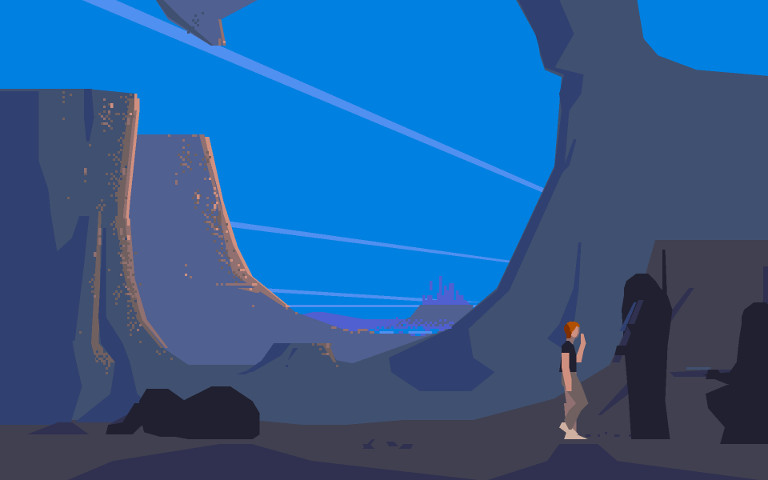
[Discuss scripted sequences and set pieces]
In 1991, most action games were deterministic by design. De facto design used stages as discrete units of content. Each stage would be constructed from several pre-made pieces such as platforms, walls, power-ups, and enemies, all of which reacted to the player according to a constant set of gameplay mechanics. Set pieces - singular dramatic moments which didn't adhere to such gameplay mechanics, were uncommon.
Another World by contrast features a completely organic world where every pixel is hand-drawn, no two screens share the same background, and set pieces occur near constantly. One moment you are in a narrow ventilation shaft, only able to move by rolling, barely able to see, and must listen to determine the location and frequency of deadly steam bursts and navigate through them safely. Moments later you emerge from a tunnel, concealed by the darkness, unseen by a guard patrolling the gangway. As you blast him, a fleeing prisoner is seen in the foreground, shots from pursuing guards whizzing past his head.
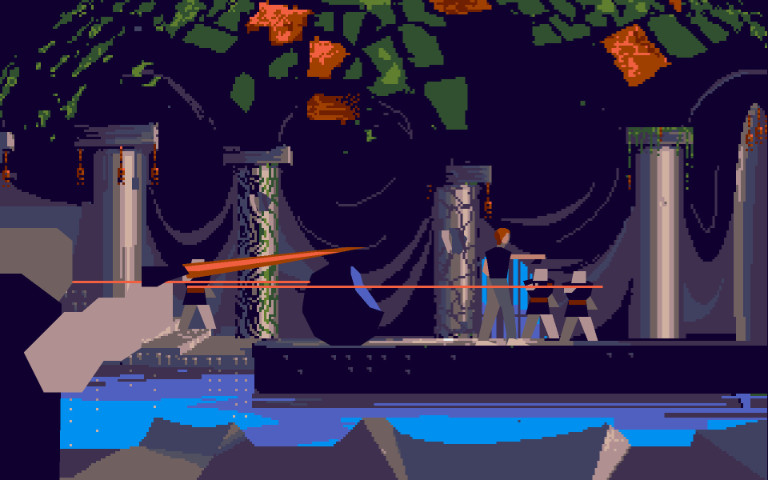
[Discuss contribution to visual storytelling]
At a time when many games lacked any sort of narrative, and the minority which did relied on techniques such as dialog, text dumps, and tableau, Another World made great advancements in visual storytelling. Without any words, it tells a cohesive plot, immerses the player in a believable world, and conveys a profound sense of loneliness and detachment. Cut-scenes exist, but are brief and seamlessly integrated into the action. When looking out the window from the top of a lookout tower, the perspective shifts from the side-scrolling perspective to Lester's point of view, giving a 3D perspective of a vast wasteland that stretches onward as far as the eye can see, and then back to the side-scrolling perspective. The world becomes a far larger and more detailed place than a single visual plane ever could. Even when restricted to the 2D perspective, Another World makes creative use of multiple planes. Backgrounds and foregrounds are multi-layered, and every single screen is hand-crafted and detailed enough to convey a sense of reality and history to the place depicted. Occasionally an action occurs in the background or foreground, sometimes simple repeating animation (such as miners in the background picking at rocks), sometimes abrupt events (such as laser blasts from off screen shattering the scenery around you on screen). This use of layers makes the world more real, and it engages the player with a sense of urgency.
Cinema has long had a visual narrative "language" - a set of rules and techniques for conveying narrative through images, whose modern form was largely established and solidified by silent films long ago. Video games continue to struggle with a de facto standard - several emulate cinema through lengthy cut-scenes, but in doing so disrupt the flow of the gameplay and still fail to approach great cinema. Many others keep gameplay and narrative as separate sections, alternating between episodes of uniform gameplay and non-interactive cinematics. To use visuals to aid gameplay and narrative at once is a difficult undertaking. Another World pioneered such a language, using rules and techniques to complement interactivity and transcend cinematic qualities.
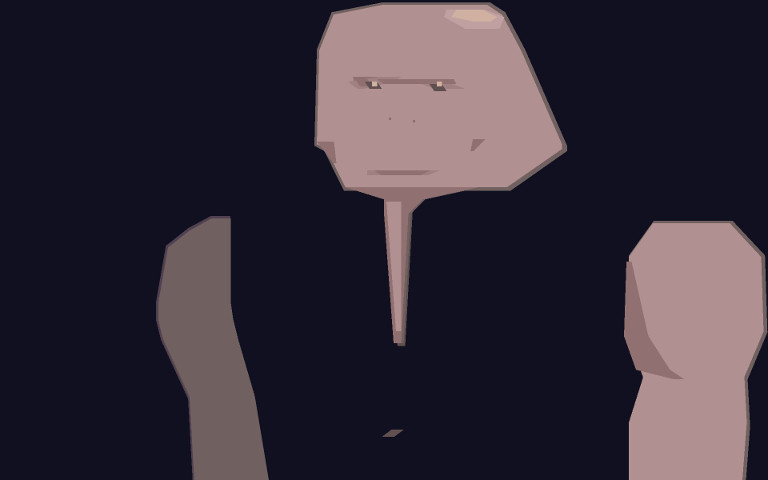
[Discuss contribution to art/indie games]
Perhaps the most abstract achievement of Another World is its anticipation of the arthouse / indie game. Éric produced a truly personal and authorial game - arguably the first of its kind - having spent two arduous years crafting and meticulously refining it. His 2011 postmortem revealed that his feelings guided the tone and flow of the game, and that he developed scenes in sequence without knowing what would happen next so that this would occur naturally. Lester became an avatar for himself, even filming himself as a rotoscope model, and the sense of isolation, vulnerability, despair, empathy, and exhaustion would stem directly from his own feelings throughout the project. Cliffhangers, twists and turns, and catharses were his experiences just as much as the players'.
[Discuss games influenced by Another World]
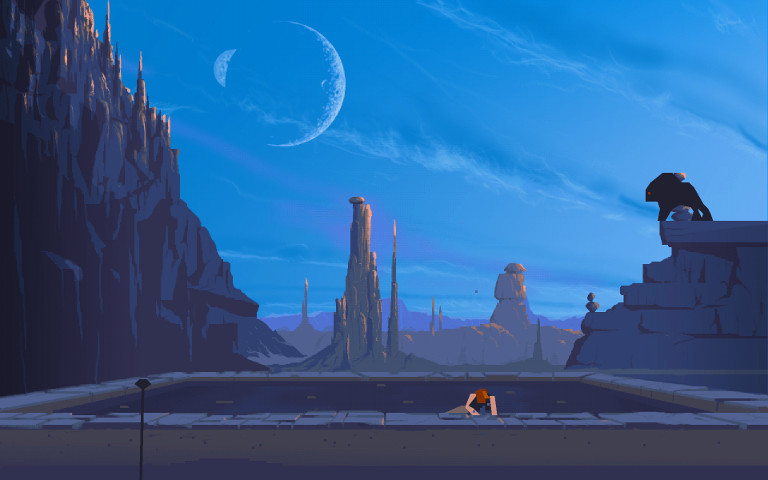
Another World was ported to the SNES, Sega Genesis, and 3DO as "Out of this World." A sequel was released for Sega CD, which Éric disavows, preferring that the original ending remains open-ended. In 2006, Éric would release Another World: 15th Anniversary Edition, which featured remade high resolution graphics. A 20th Anniversary Edition followed, focusing on mobile phone compatibility. It is available at GOG, and includes the 15th Anniversary Edition as a bonus download. I recommend these as the definitive editions of the game; as Éric personally created the new artwork, it is true to the original aesthetic while being much more detailed. They also include options to play the game with its original graphics and sounds, making it nearly indistinguishable from the 1992 editions if desired.
Beginner tips:
- Never be discouraged by death. Frequently, your best weapon for overcoming challenges is the knowledge gained from dying at them repeatedly.
- Your kick has greater distance if you press the action button while crouching instead of standing. Use this to kill slugs from a safe distance. But don't do this if a slug has dropped from the ceiling and is very close, because you will miss. Stand up and kick them instead.
- The laser gun (when you find it) has three modes of fire. Your enemies have the same kind of gun, and can use the same tactics as you.
- Tapping the trigger will fire a series of small but instantly deadly laser blasts.
- Holding the trigger for a second produces a small energy ball, and releasing deploys a shield which can block several small laser blasts, but allows matter to pass. You can deploy several, and fire shots from behind its temporary safety.
- Holding the trigger for several seconds produces a large energy ball, and releasing fires a big laser which can destroy nearly anything with one hit, including shields. An enemy protected by a single shield can be killed by taking out the shield this way, followed with a quick laser blast to the now un-protected target.
- When you first find the gun, do NOT use the big laser for any purpose except to destroy a single electronically-locked door. The big laser will drain the battery, and you need that shot to get past that door. Afterwards, you will soon be able to recharge the gun, and then you can use the big laser as much as you want.
- Checkpoints are frequent, but will not trigger if you make a mistake (typically destroying something before you were meant to, or failing to destroy something you were meant to). If you think you have performed several actions, and made significant progress, but died and got sent back quite a ways undoing all your progress, then you likely made a mistake, and should approach the area differently.
- A few enemies use grenades, which your gun has no defense against. You must outsmart these enemies by interacting with the environment.
| Civilization | Index | (work in progress) |

